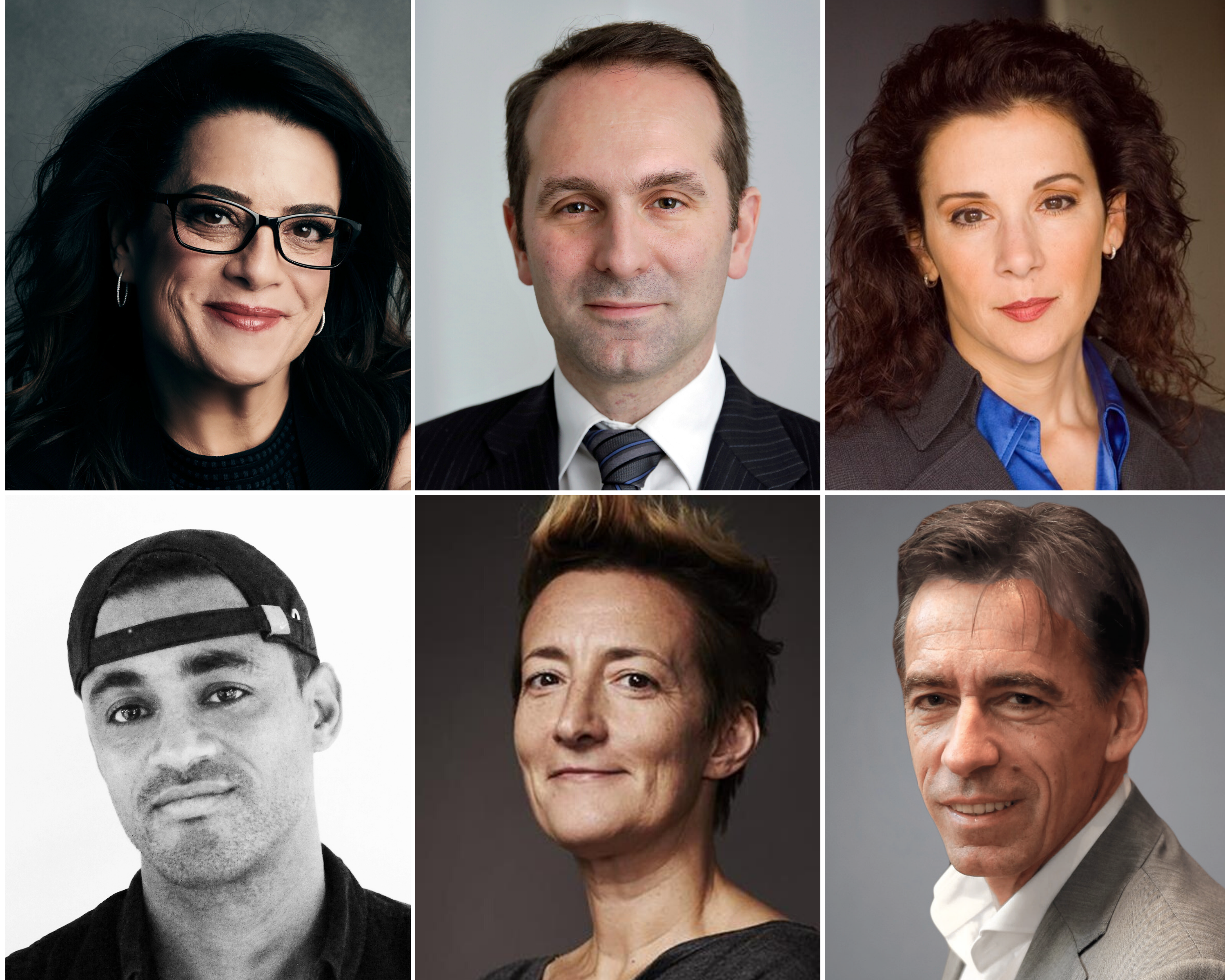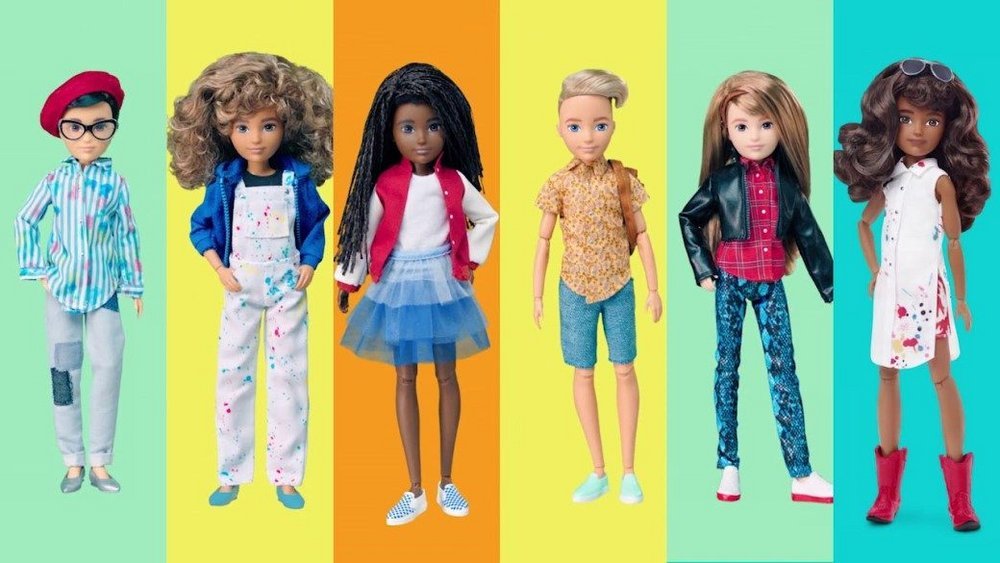Get analysis, insight & opinions from the world's top marketers.
Sign up to our newsletter.
To coincide with the launch of the WFA Marketer’s Approach to Diversity and Inclusion, WFA asked six industry leaders why they think prioritising diversity and inclusion in the marketing industry is so important.

Clockwise from top left: Jess Weiner, Talk to Jess; Daniel Seymour, UN Women; Madeline Di Nonno, Geena Davis Institute on Gender in Media; Stephan Loerke, WFA; Rebecca Swift, Getty Images; Chris Kenna, Brand Advance.
Jess Weiner is a cultural expert and founder of Talk to Jess, a consultancy that works with brands to help them better reflect people in their media and marketing. Weiner played an important role in the launch of both Dove’s ‘Campaign for Real Beauty’ in 2006 and Mattel’s 2016 redesigns of its Barbie lines to include more inclusive body types.
“I’ve been a cultural expert in media, representation, and social change for over two decades. When I first started out, we didn’t have a tremendous amount of public discourse about the need for better representation nor the impact that harmful stereotypes in media can create in our lives, our communities and our world. When we exclude people from our advertising, we exclude them from our culture.
If we discount or dismiss intersectional experiences, if we don’t have a well-balanced team, if we don’t have leaders who not only prioritize inclusion but understand bias, privilege, and lead from a place of earnest desire to engage in difficult conversations, then we will not reflect and connect with the multi-dimensional world we live in. That is bad for business, but it is worse for humans.
Now with more research, activism, a culture of consumers demanding to be seen, industries are waking up to the fact that diverse representation is not a nice-to-have in business, but a NEED-to-have with our audience.
We have a responsibility as the creative gatekeepers who shape powerful global narratives to commit to reflect a multitude of lives and experiences. Because that is good for business and even better for humanity.” - Jess Weiner

In 2019, Jess helped to launch Mattel’s first gender-inclusive doll line called Creatable World, which is redefining dolls and who plays with them
Daniel Seymour is the Director of Strategic Partnerships at UN Women, the United Nations' body that works for the empowerment of women worldwide. In 2017, they convened the Unstereotype Alliance, which seeks to achieve this goal through mobilising support from the marketing sector.
“Stereotypes are among the biggest drivers of how we treat each other and how we are treated. They can grant us a life of opportunity or exclusion, or anywhere in between. Women have known this to be true for as long as we can remember, in the workplace, the home and public spaces. The advertising and marketing sector has a huge role in shaping these stereotypes. Decisions made in the industry can have wide reaching impacts on everyone, both positive and negative, by shaping what we think because that is what the industry does.
Through unstereotyping advertising we can start to break down harmful beliefs and norms and replace them with something better for a more equal society. And because we can, we must. We have to build unstereotyping into all facets of communications and the creative process, building diverse teams who can deliver across the entire creative supply chain.
If there is one key to making this happen, it is putting in place the means for accountability and then using them. Define your KPIs for diversity. Set targets. Announce those targets. Report publicly on progress against them. Only then will we really have placed D&I in a place where it truly determines not only what we do, but who we are as companies.” - Daniel Seymour
The short video ‘The Problem is Not Seeing the Problem’, launched on the Unstereotype Alliance's one-year anniversary, calls on the industry to act immediately to eliminate stereotypes from their ads
Madeline Di Nonno is CEO of the Geena Davis Institute on Gender in Media, a non-profit that advocates for the equal representation for women in media. In 2017, the Institute released the results of a seminal piece of research on more than 2,000 ads from the Cannes Lions archive, shining a light on how even some of the industry’s most celebrated work can perpetuate bias.
“Media is one of the most immediate and impactful ways to influence our views on societal norms and has the power to eradicate intersectional gender inequality in our global cultures. If our audiences can see themselves positively portrayed on-screen, it can reinforce the message that they matter. And also, it can influence their long-term views throughout their lives.
And yet, our research still shows a significant disparity when it comes to diversity and inclusion in ads. As content creators and business leaders, why not create fictional worlds in advertising that have an abundance of unique, diverse, and equitable portrayals and then let life imitate art?
Your next project can truly change lives by showcasing ads that are gender-balanced, diverse, and inclusive. We have seen numerous examples of how positive media portrayals have directly influenced and inspired career paths, education and overall self-esteem, proving our motto “If she can see it, she can be it.” - Madeline Di Nonno

The 2017 'Gender bias in advertising' report highlighted the gender disparity in TV ads from Cannes
Chris Kenna is the CEO and founder of Brand Advance, the UK’s first diversity-focused media agency. Over just two years, Brand Advance has worked with Unilever, L’Oréal and Omnicom Media Group, to name but a few. More recently, the agency worked with Public Health England on an awareness-raising campaign on COVID-19 targeted at the Black, Asian and Minority Ethnic (BAME) communities in the UK, highly affected by COVID-19.
"In the UK, COVID-19 has taught us two things about society in crisis: when the economy falls away, it is in a large part minorities (such as the BAME communities who make up a large proportion of the healthcare workforce) who are propping society up and are often disproportionately affected. Secondly, that people want brands to be helpful and relevant now more than ever – to entertain, to give us choice, to raise awareness, to play a part in the community.
At a time when governments, businesses and the society at large are struggling, we need to rethink our marketing and make it useful. With our sheer communication clout, we can make a real difference to public health, the perception of minorities, and people’s behaviour at large.
Going forward, the industry needs to go beyond simply inclusive content and using the image of diversity to advertise. We need to take this content to the platforms and publications where these communities already feel represented and have a voice. Good creative needs to be backed up by relevant contextual media placement." - Chris Kenna
Rebecca Swift is Senior Director and Global Head of Creative and Insights at Getty Images, one of the world’s largest suppliers of stock images and visual media. In 2019, they partnered with Dove, GirlGaze and members of the public to create Project #ShowUs, the world’s largest collection of loyalty-free photos depicting woman and non-binary individuals compiled to encourage brands to use more authentic and diverse representations of people in their media.
“Togetherness and belonging have important cultural meaning (which have been amplified because of the current crisis) and brands have a responsibility to ensure that employees, suppliers and customers are all considered. Imagery moves and defines the world and broad representation ensures everyone feels included. Anyone with the word “brand”, “marketing” or “creative” in their job title should be taking on the responsibility of representation in the imagery they choose – whether for an internal memo, social media post or a campaign. The rest of the business (who may be less visually confident) will follow their lead.
I am very fortunate to witness global visual content transactions across regions, sectors and media on a daily basis. I can confidently state that I have yet to work with a brand who has reversed their decision to bring more diversity and inclusivity to their imagery. The benefits are long reaching because those choices bring other less confident marketers along in their wake.” - Rebecca Swift

Photography by Deby Suchaeri for Project #ShowUs
“Diversity of voices and ideas is the lifeblood of our industry. We are constantly striving for that priceless, intangible thing – creativity – but are sometimes hesitant to embrace the full range of talent that exists out there. We owe it to the consumers we serve to accurately represent them in all their complexity and nuance, and the most authentic way to do that is, and always will be, to throw our doors open to bold new perspectives. To reap the benefits of inclusion, we must put our words into action, from supply and product development to marketing and communications. Now more than ever, marketers must be the bridge between people and companies in showing that we mean what we say, and that we can broadcast it with humility and sensitivity.” - Stephan Loerke, WFA CEO
To download A Marketer's Approach to Diversity and Inclusion go to www.wfanet.org/diversity